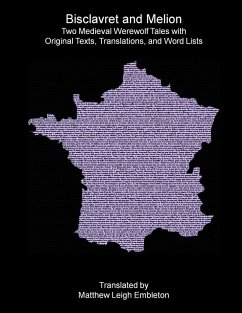Bisclavret was written by Marie de France between 1160 and 1175, while Melion was written by an unknown or anonymous writer between 1190 and 1204. While they are several decades apart, they have a number of similarities. This has led some people to believe that they could in fact originate from the same story, or perhaps they are both inventions drawing on the same source of icons and motifs found in the folklore, myth, and legends of the time. They are both written in Old French, Bisclavret is in 'Anglo-Norman', whereas Melion is in the 'Picard dialect', both of which are part of the 'Langues d'oïl' dialect continuum of Gallo-Romance languages. Old French is the result of a gradual separation from Vulgar Latin and Common Romance, coming into contact with influences from Gaulish (Continental Celtic), and Frankish (Germanic). The text is presented in the original Old French, with a literal word-for-word line-by-line translation, and a Modern English translation, all side-by-side. In this way, it is possible to see and feel how Old French worked and how it has evolved. Also included is a word list with 2,030 Old French words translated in to English, and 1,842 English words translated into Old French. This book is designed to be of use and interest to anyone with a passion for the Old French language, French history, or languages and history in general.
Bitte wählen Sie Ihr Anliegen aus.
Rechnungen
Retourenschein anfordern
Bestellstatus
Storno








